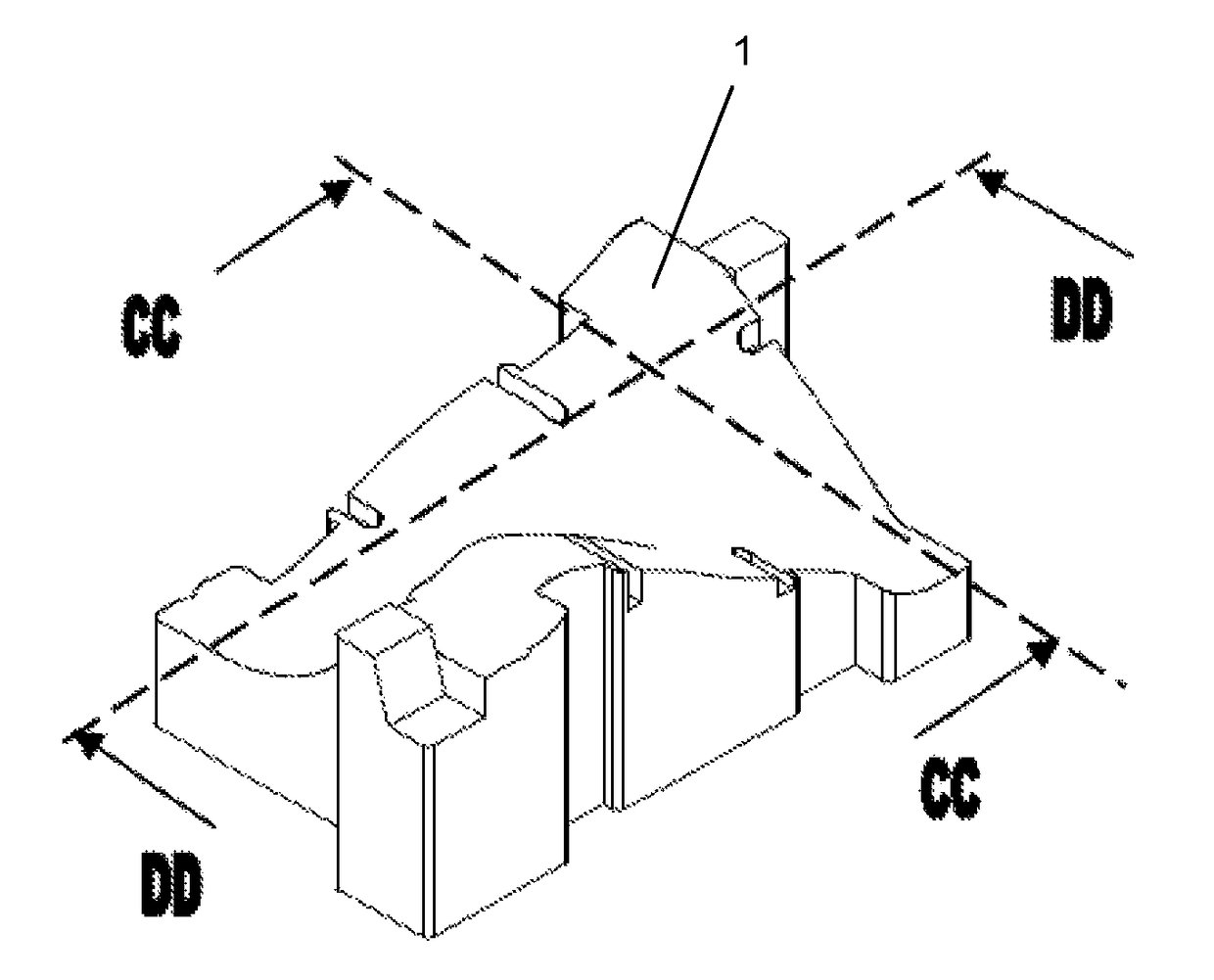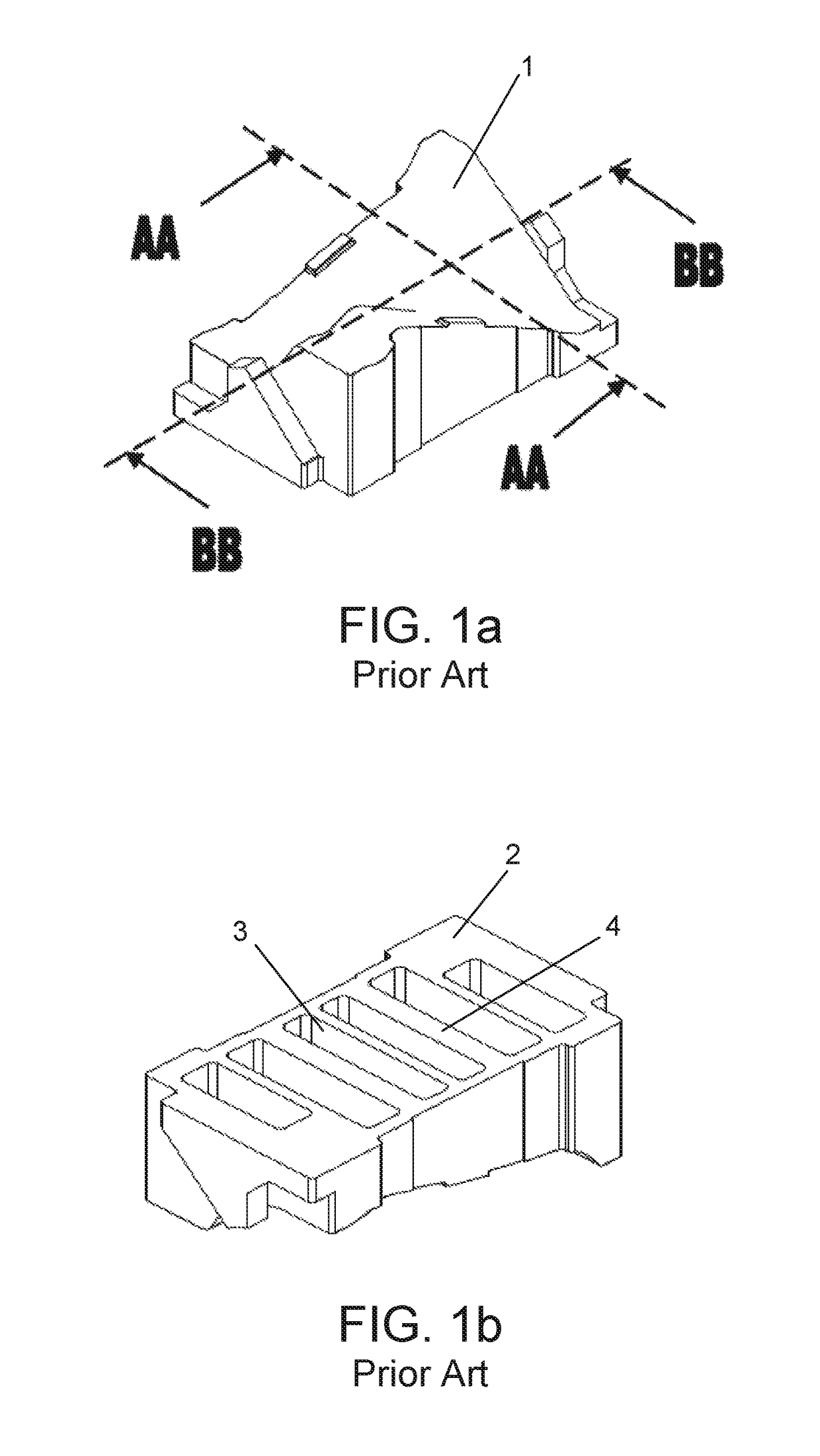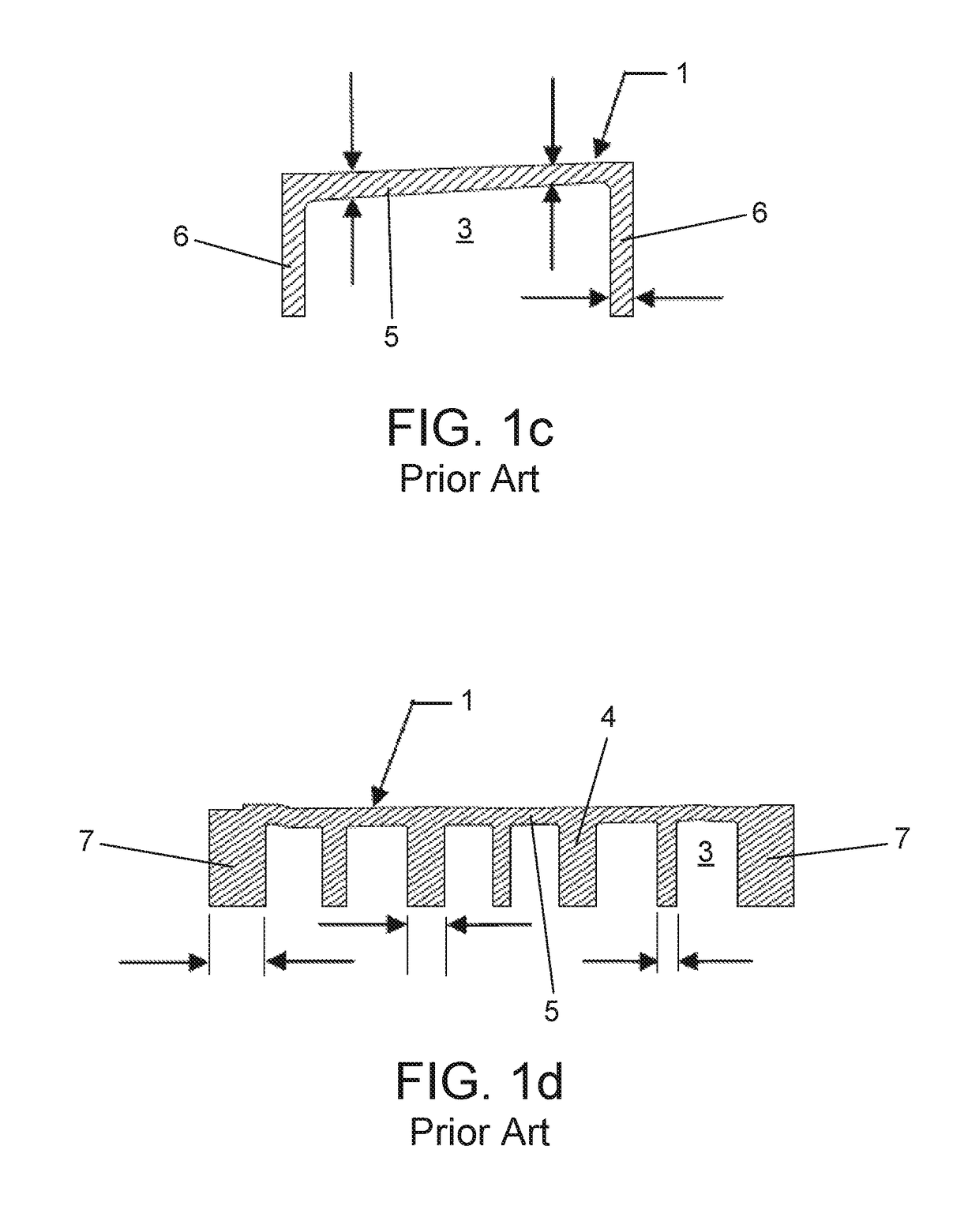Casting die
a technology of casting dies and dies, applied in the field of dies, can solve the problems of undesirable variation in the shape of cast or forged components, reduce the life of dies, and reduce material usage, and reduce the effect of thermal and contraction stresses
- Summary
- Abstract
- Description
- Claims
- Application Information
AI Technical Summary
Benefits of technology
Problems solved by technology
Method used
Image
Examples
Embodiment Construction
[0036]As shown in FIGS. 2a-d, a first embodiment of the present invention provides a casting die having a forming surface 1 and an opposing rear surface 2.
[0037]In use, the forming surface 1 is used to define one half of a mould cavity and to form superplastic or liquid material e.g. molten metal or metal in its plastic form into the shape desired for cast, forged, or superplastically formed component.
[0038]The rear surface has a width dimension (extending in the direction of line CC) and a longer length dimension (extending in the direction of line DD).
[0039]The rear surface has a plurality of rectangular cavities 3′ defined and mutually spaced by walls 4 having an axial extension coincident with the width dimension of the die and a transverse wall 6 having an axial extension coincident with the length dimension of the die.
[0040]The die further comprises opposing lateral edge walls 7 (having an axial extension coincident with the width of the die) and opposing transverse edge walls...
PUM
| Property | Measurement | Unit |
|---|---|---|
| angle | aaaaa | aaaaa |
| angle | aaaaa | aaaaa |
| width | aaaaa | aaaaa |
Abstract
Description
Claims
Application Information
 Login to View More
Login to View More - R&D
- Intellectual Property
- Life Sciences
- Materials
- Tech Scout
- Unparalleled Data Quality
- Higher Quality Content
- 60% Fewer Hallucinations
Browse by: Latest US Patents, China's latest patents, Technical Efficacy Thesaurus, Application Domain, Technology Topic, Popular Technical Reports.
© 2025 PatSnap. All rights reserved.Legal|Privacy policy|Modern Slavery Act Transparency Statement|Sitemap|About US| Contact US: help@patsnap.com



